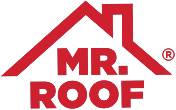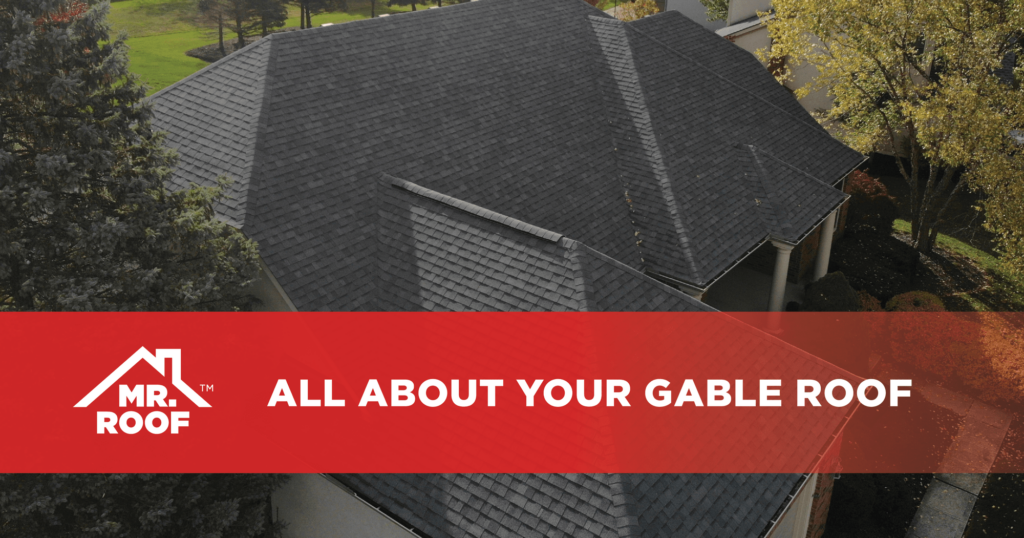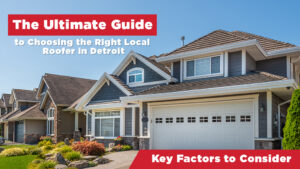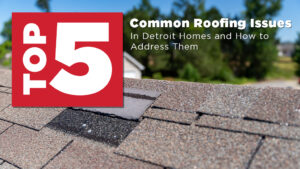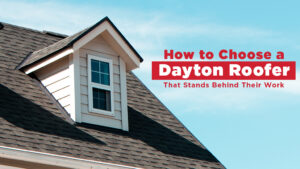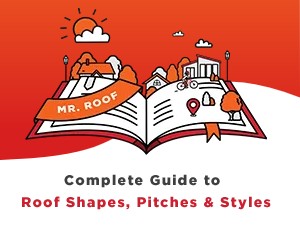Unbeknownst to many homeowners, the style of your roof can have a large impact on the functionality of your home. While aesthetics generally drive home purchases, it’s important to know how the details of your home may benefit or hinder your family’s wellbeing. When it comes to roofs, many people understand that having a well-made roof is essential to protecting the home as a whole and that replacing your roof is essential every 15 years or so. What some homeowners don’t realize is that the shape of the roof itself may affect how effective your roof is at protecting your family. Discovering the style of roof on your home allows you to look for common issues that crop up with that type of roof and may even affect what kinds of homes you look for in the future. A main category of roofing is the gable roof. You’ve undoubtedly seen this roof style before, though it’s common not to know much about it.
What is a gable roof?
Gable roofs are fairly basic. They consist of two roof slopes that meet at a single seam on the top of the house. This seam runs the length of the home, and there are no slopes on the other two sides of the house. If a child were to draw a simple picture of a house, they would likely draw one with a gable style roof, specifically a side gable. This style is common all over the world, with a particular presence in East Asian architecture. Many Gothic-style homes utilize gable roofs as part of their design as well. There are several subcategories of gable roofs that still fit the general description of a gable roof but with a different twist. These are some examples:
- Front gable. In this style, rather than having the roof slopes cover the left and right sides of the home, the slopes come down the front and the back sides instead.
- Crossed gable. In these homes, there are several gable roofs whose seams intersect. In the case of a crossed gable home with four peaks, the seams would make a cross shape from the top.
- L-Shaped gable. On these homes, the roof comes down farther on one part of one side than it does anywhere else. The low part creates almost an A-Frame style, but only on one portion of the home. It is distinct, but it does happen.
- Box gable. In this iteration of the gable roof, there is a crossbeam that goes from one of the eaves to the other. Essentially, this simply completes a triangle on the sides without eaves. It often indicates a distinct attic area rather than a full floor.
Gable roofs do not have to only involve straight edges, but many do. Some gable roofs have curved lines, and they can also have dormers of any kind.
Considerations about gable roofs
As with any home feature or style, gable roofing has some pros and cons. Depending on your family, lifestyle, and the climate in your area, a gable roof may not work. Before making any new home purchases, or before designing a new construction, consider these advantages and disadvantages of gable roofs:
Advantages:
- They are effective at removing snow and rain. Because of the steep slope of most gable roofs, snow and rain easily run down the eaves and into the gutters. There is little risk of pooling or accumulation under normal weather circumstances.
- They’re easy to make. Because of their basic design, gable roofs are fairly easy to build. This often makes them a less expensive option when building a new construction.
- They’re affordable to maintain. For similar reasons, gable roofs are easy to maintain because they are so common. Most roofers will know how to work well with gable roofs.
Disadvantages:
- They don’t stand up well to high winds. In weather events such as hurricanes or tornadoes, Gable roofs often don’t do well. In many cases, builders omit adding additional support to a gable roof to maximize living space. In the event of severe weather, a gable roof can easily collapse.
- There is the potential for updraft damage. If there is a significant overhang on a gable roof, a strong gust of wind can catch under the lip of the roof and remove the roof from the rest of the home.
- They aren’t always well made. Many DIY homeowners try to replace or install their own gable roofs. Because of the simplistic design, many amateur craftsmen believe that they can save money by doing the job themselves. However, this often leads to ill-fitting parts and unreliable support, only adding to the dangers. If you are buying a home with a gable roof, be sure to have it inspected by a professional to identify any homemade roof fixes.
For some people, the advantages of a gable roof far outweigh the disadvantages. For areas of the world that don’t receive hurricanes or lots of snow, gable roofs are an absolutely wonderful choice. For others, a different roofing option may be a better fit and provide more peace of mind.
Differences between a gable, mansard, and hip-style roof
The two other main categories of roofs that you will encounter are mansard and hip. The difference between these types is fairly simple to understand and can help you determine what style to look for. While a gable roof only has slopes on two sides of the home, a hip roof has slopes on all four sides. Other than the number of slopes, the possibilities for customization in hip and gable roofs are the same. A mansard roof is a little bit different. Mansard roofs have slopes on all four sides as well, but each side has two different slopes. The top slope of each side has a more gradual incline downwards, whereas the second portion of the slope is significantly steeper. This creates an angle on the sides of the home, giving it a distinct appearance.
Contact Mr. Roof
It’s never a good idea to attempt roofing projects without a professional to help. The experts at Mr. Roof have been serving American homeowners for over 50 years. We pride ourselves on creating quality, well-built roofs that are dependable and give our customers peace of mind. For any questions about roofing styles, to find a location near you, or to request a free estimate, contact Mr. Roof today.
